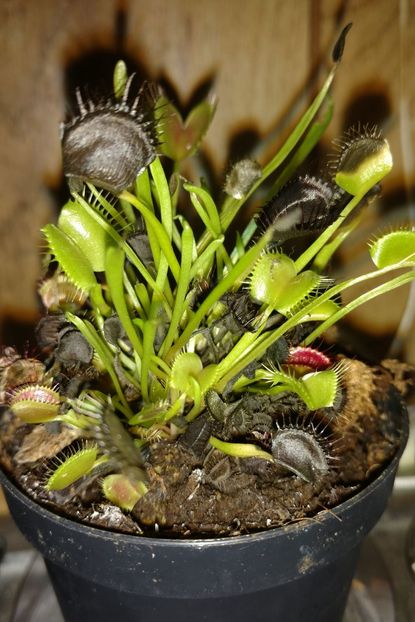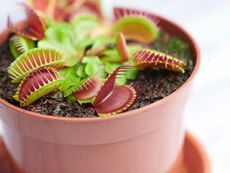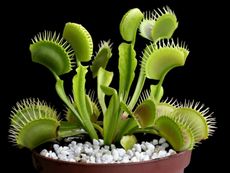My Venus Flytrap Is Turning Black: What To Do When Flytraps Turn Black


Venus flytraps are enjoyable and entertaining plants. Their needs and growing conditions are quite different from those of other houseplants. Find out what this unique plant needs to stay strong and healthy, and what to do when Venus flytraps are turning black in this article.
Why to Flytraps Turn Black?
Each trap on a Venus flytrap plant has a limited lifespan. On average, a trap lives for about three months. The end may look dramatic, but there is usually nothing wrong with the plant. When you find that the traps on a Venus flytrap turn black much sooner than they should or when several traps die at once, check your feeding practices and growing conditions. Correcting the problem can save the plant.
Feeding flytraps
Venus flytraps kept indoors depend on their caretakers to provide the insect meals they need to thrive. These plants are so much fun to feed that it's easy to get carried away. It takes a lot of energy to close a trap and digest the food inside. If you close too many at once, the plant uses all of its reserves, and the traps begin to blacken. Wait until the traps are fully open and feed just one or two a week. If you're feeding the right amount and the Venus flytrap is turning black anyway, perhaps the problem is what you are feeding it. If a bit of the insect, such as a leg or a wing, sticks outside the trap, it won't be able to make a good seal so that it can digest the food properly. Use insects that are no more than one-third the size of the trap. If the trap catches a bug that is too large on its own just leave it alone. The trap may die, but the plant will survive and grow new traps.
Growing conditions
Venus flytraps are a bit fussy about their soil, water, and container. The fertilizers and minerals that are added to commercial potting soils help most plants grow, but they are fatal to Venus flytraps. Use a potting mix labeled specifically for Venus flytraps or make your own from peat moss and sand or perlite. Clay pots also contain minerals, and they leach out when you water the plant, so use plastic or glazed ceramic pots. Water the plant with filtered water to avoid the introduction of chemicals that may be in your tap water. The plant also needs plenty of sunlight. Strong light coming in from a south-facing window is best. If you don't have strong, natural light available, you will have to use grow lights. Good care and proper conditions are essential to preserving the life and health of the plant.
Gardening tips, videos, info and more delivered right to your inbox!
Sign up for the Gardening Know How newsletter today and receive a free download of our most popular eBook "How to Grow Delicious Tomatoes."

Jackie Carroll has written over 500 articles for Gardening Know How on a wide range of topics.
-
 Grow a Bathroom Oasis: 8 Best Bathroom Plants With No Light or Low Light
Grow a Bathroom Oasis: 8 Best Bathroom Plants With No Light or Low LightSome apartment dwellers grow the best bathroom plants with no light or low light. Read how one of our favorite plant lovers does it in the big city.
By Teo Spengler
-
 "My Worst Mistake" – Gardeners Share 10 Hard-Learned Lessons
"My Worst Mistake" – Gardeners Share 10 Hard-Learned LessonsGardeners never stop learning, and sometimes our mistakes are the best teachers. But why not save time and heartache by learning from other gardeners' failures?
By Melanie Griffiths
-
 Tips For Repotting Venus Fly Trap Plants
Tips For Repotting Venus Fly Trap PlantsVenus fly traps don’t really need repotting like most houseplants, but if yours does, click here to learn how to do it.
By Mary Ellen Ellis
-
 Venus Flytrap Problems: Tips On Getting A Venus Flytrap To Close
Venus Flytrap Problems: Tips On Getting A Venus Flytrap To CloseIf you are lucky enough to have one of these charmingly strange plants, you may have encountered some Venus flytrap problems - namely getting a flytrap to close. Discover what to do here.
By Amy Grant
-
 Grow A Venus Fly Trap: How To Care For A Venus Fly Trap
Grow A Venus Fly Trap: How To Care For A Venus Fly TrapCarnivorous plants are fun to grow and fascinating to watch and learn about. The Venus fly trap is a moisture loving plant that grows near marshes and bogs but makes a great houseplant. Learn more here.
By Bonnie L. Grant